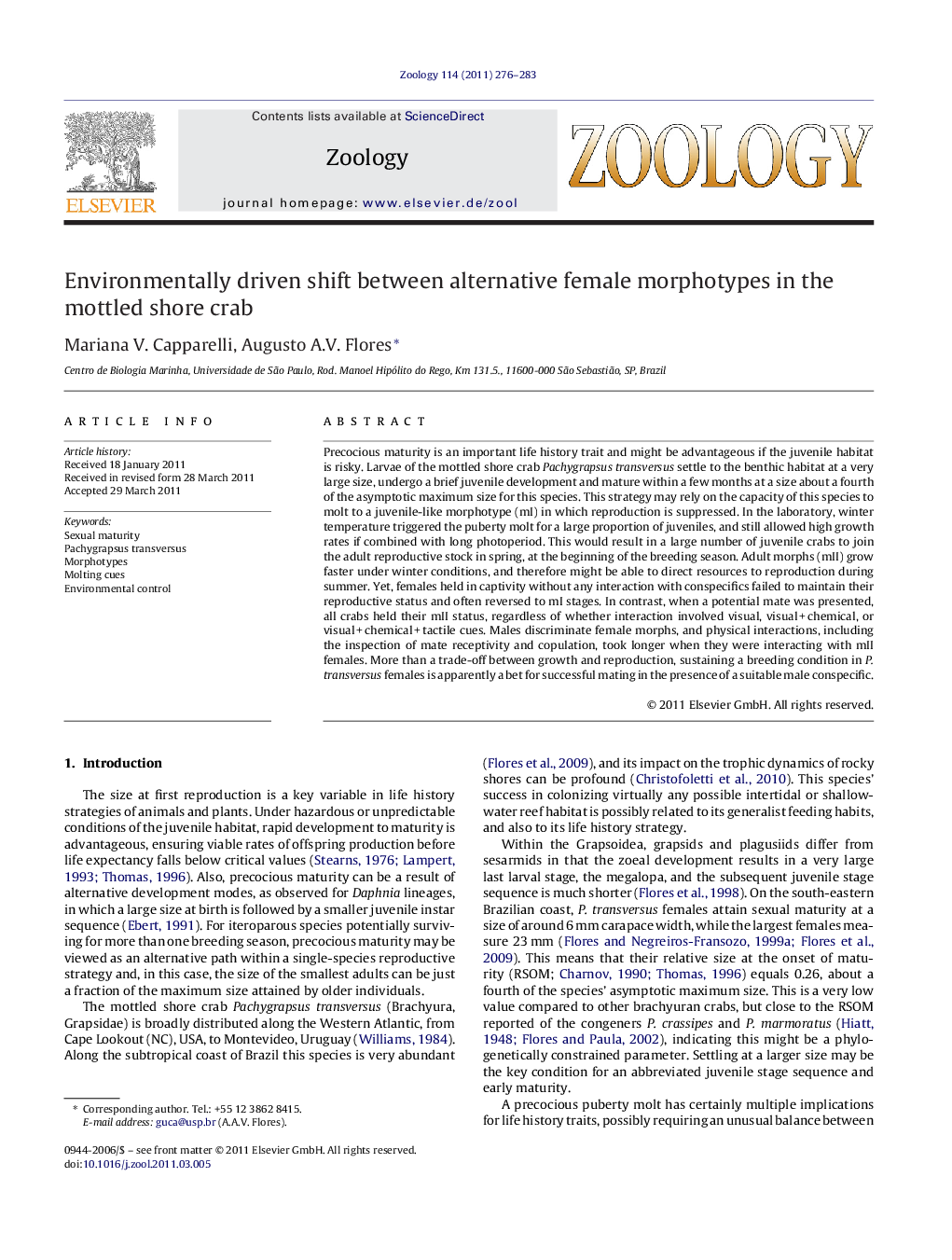| کد مقاله | کد نشریه | سال انتشار | مقاله انگلیسی | نسخه تمام متن |
|---|---|---|---|---|
| 2791238 | 1154859 | 2011 | 8 صفحه PDF | دانلود رایگان |

Precocious maturity is an important life history trait and might be advantageous if the juvenile habitat is risky. Larvae of the mottled shore crab Pachygrapsus transversus settle to the benthic habitat at a very large size, undergo a brief juvenile development and mature within a few months at a size about a fourth of the asymptotic maximum size for this species. This strategy may rely on the capacity of this species to molt to a juvenile-like morphotype (mI) in which reproduction is suppressed. In the laboratory, winter temperature triggered the puberty molt for a large proportion of juveniles, and still allowed high growth rates if combined with long photoperiod. This would result in a large number of juvenile crabs to join the adult reproductive stock in spring, at the beginning of the breeding season. Adult morphs (mII) grow faster under winter conditions, and therefore might be able to direct resources to reproduction during summer. Yet, females held in captivity without any interaction with conspecifics failed to maintain their reproductive status and often reversed to mI stages. In contrast, when a potential mate was presented, all crabs held their mII status, regardless of whether interaction involved visual, visual + chemical, or visual + chemical + tactile cues. Males discriminate female morphs, and physical interactions, including the inspection of mate receptivity and copulation, took longer when they were interacting with mII females. More than a trade-off between growth and reproduction, sustaining a breeding condition in P. transversus females is apparently a bet for successful mating in the presence of a suitable male conspecific.
Journal: Zoology - Volume 114, Issue 5, October 2011, Pages 276–283